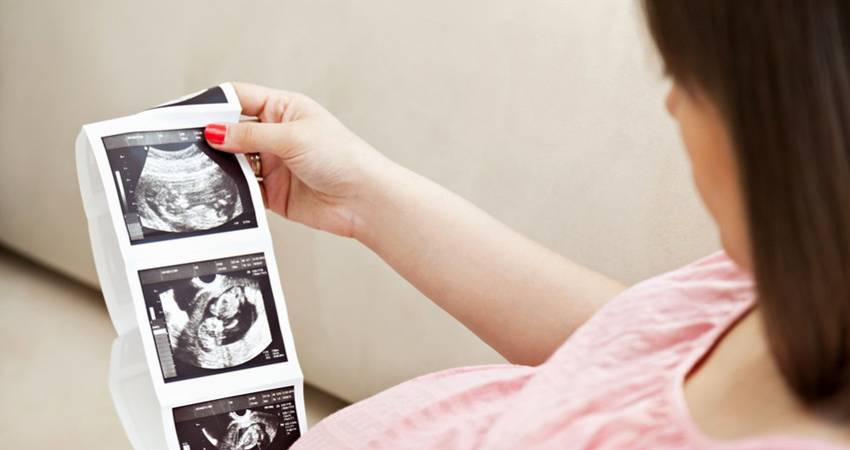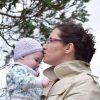
Remembering the first time I debated abortion
I can’t count the number of times I’ve heard the argument: “We shouldn’t show pictures of abortion victims because it will hurt post-abortive women!”
I resent that argument for quite a few reasons. First of all, it ignores the many post-abortive women who have joined us on the streets, courageously using their stories to help others see the truth about abortion.
And second of all, one of my very first experiences with abortion victim photography shows just how misguided and negligent this argument is
In February of 2010, I travelled to Florida with a team of pro-lifers to join a campus outreach project I’d never tried before: The Genocide Awareness Project. Featuring huge billboards showing photos of abortion victims, this was my first time engaging in activism this controversial.
And on February 16, 2010, I met a young girl who forever changed the way I viewed the abortion debate.
She walked past our display, and I went over to her, extending my hand with a pamphlet and asking, “What do you think about abortion?”
Her name was Jay. She took it, stepped back, and looked at our display. Saw the gruesome imagery of dismembered aborted children.
And then she replied softly, “Well, I had one on January 5th.”
I had no idea how to respond. I’d been trained to explain that her child was a biological human being, but it was too late for her child. I’d been instructed in how to illustrate that her pre-born child was a person, but her pre-born child’s life had already been ended.
I started to feel uncomfortable about the signs I was standing in front of. So I asked her what she thought.
She started crying. She was angry. “No one told me. No one told me it looked like that,” she said in a broken voice.
She continued, talking faster now: “All the reasons I had to abort—financial, educational, my difficulties with my boyfriend, seemed so logical at the time. No one ever showed me these pictures, or told me what abortion actually did. And now I have to live the rest of my life with the realization that I denied my baby Raven a chance at life. And there is no reason good enough for that.”
And that’s when I came to a realization: Her sin of commission was our sin of omission. In a country filled with Christians, filled with pro-lifers, the only person who had talked to this girl about abortion was an abortionist who took her money and killed her baby.And that’s when I came to a realization: Her sin of commission was our sin of omission. In a country filled with Christians, filled with pro-lifers, the only person who had talked to this girl about abortion was an abortionist who took her money and killed her baby.
I realized then what I’ve realized a hundred times since: It doesn’t hurt a post-abortive woman to see a photo of an aborted baby. It only hurts her if she doesn’t see it in time. Like the middle-aged Asian woman who told me she had two abortions, but wouldn’t have had either of them if she’d seen our signs while making the decision. Like the girl in front of a high school who wondered why no one had ever told her what abortion actually did before.
I walked with Jay to her class as she described the aching hole her abortion had left her with, walking right passed a group of Planned Parenthood protestors who were handing out pamphlets that called post-abortion syndrome “a myth.” She told me she’d named her aborted child “Raven,” and she had tattooed that name across her stomach just above the place that Raven lived out her short life.
And as I listened, I made up my mind that no girl or woman should ever be denied the truth about abortion. For the child’s sake, and for her sake.
Because we’ve lost too many little Ravens already.
Jonathon works with the Centre for Bio-ethical reform in Canada and his blog is available here
Featured
- Campaign to stop EU funding out of state abortions - tell your EU commissioner to vote NO
- Judge recuses himself from case of woman praying in censorship zones for “apparent bias”
- I’m a Celebrity star criticises “sad” UK law that aborts babies with Down Syndrome up to birth
- British actress speaks out on “serious risk” assisted suicide bill has for those with eating disorders
- Caplan’s “Tragic Hysteria of Abortion” discusses the flaws with mainstream Turnaway Study interpretations
- Backlash as Scotland report proposes legalising sex-selective abortion up to birth
- Canada hits new record as 1 in 20 deaths a result of Euthanasia
- Ben Scallan defends pro-life on TV show Dinner with the Enemy
- Influencers share the loss of their beloved unborn baby
- Dublin woman with cancer says unborn child was sent to save her
- Mother and baby doing well after surgery for mother’s cancer during pregnancy
- Josiah: Abortion Survivor
- Loving the Unborn
- Rally for Life 2025
- Don't assist Suicide 2024


























